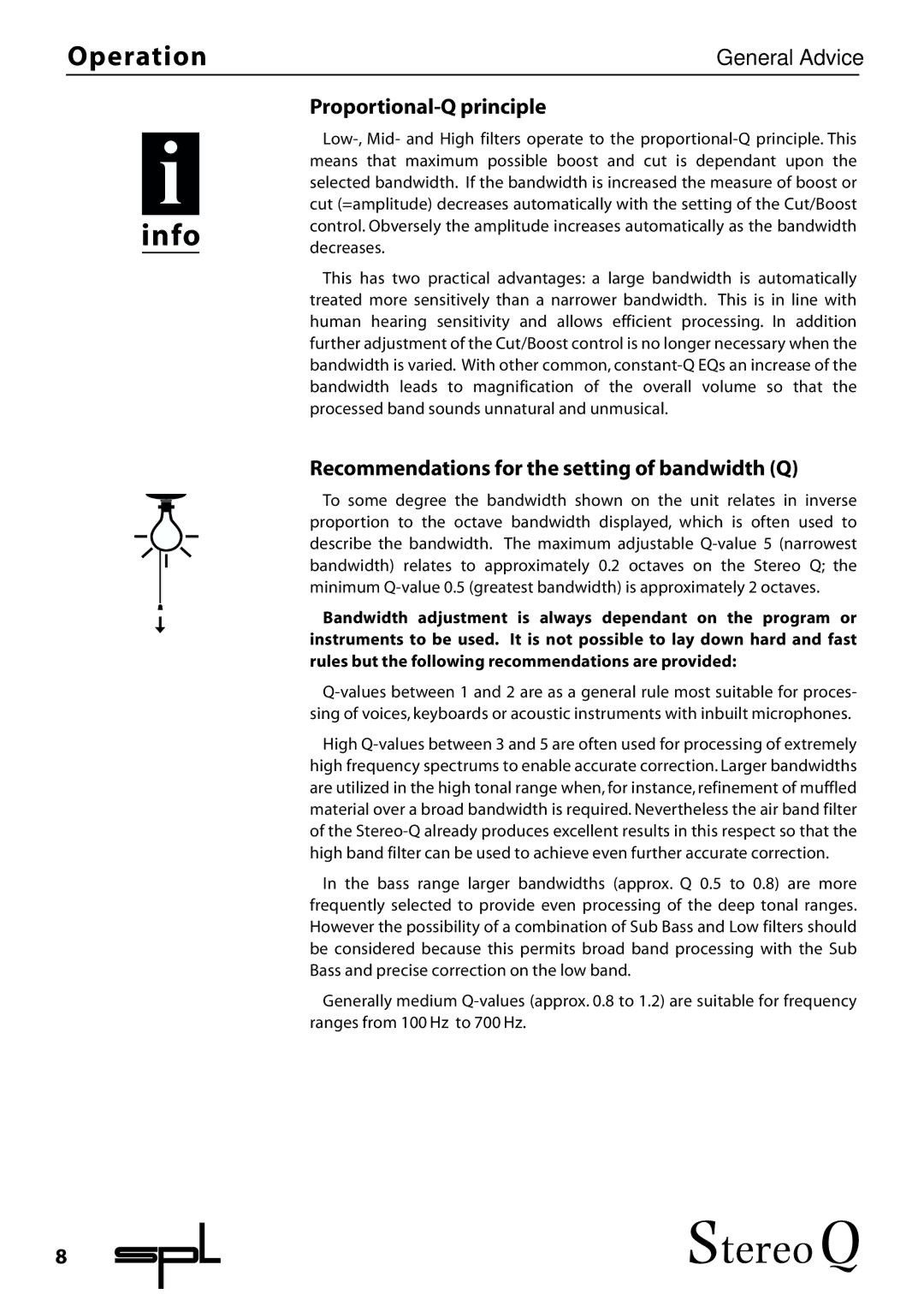2048 specifications
Sound Performance Lab (SPL) has once again set a high bar for audio excellence with its latest offering, the SPL 2048. This groundbreaking device is designed for professional audio engineers and enthusiasts who demand the utmost precision and creativity in their sound production. The SPL 2048 is a powerful audio interface that combines cutting-edge technology with a user-friendly design, making it a versatile tool for a wide range of applications, from recording studios to live sound environments.One of the standout features of the SPL 2048 is its high-resolution audio capture capability. With support for sample rates up to 192 kHz and 24-bit resolution, this device ensures that every nuance of sound is captured with pristine clarity. The 2048 utilizes state-of-the-art AD/DA converters that are optimized for minimal latency and high dynamic range, giving users the ability to work with high-quality audio without compromising performance.
In addition to its exceptional audio fidelity, the SPL 2048 is equipped with an impressive array of inputs and outputs. The device features multiple XLR/TRS combo inputs, allowing for seamless connectivity with various microphones and instruments. The output section also provides balanced TRS outputs, as well as digital outputs for integration with other audio systems. This flexibility ensures that the 2048 can be easily incorporated into any studio setup or live performance rig.
The SPL 2048 also excels in its built-in processing capabilities. By incorporating sophisticated digital signal processing (DSP) features, users can access a range of effects and dynamics processing tools directly within the interface. This allows for real-time monitoring and adjustments, streamlining the workflow and enhancing creativity during recording sessions.
Moreover, the device is designed with a robust yet sleek chassis, reflecting SPL's commitment to durability without sacrificing style. Its intuitive interface features clearly labeled controls and a sleek display, making it easy for users to navigate through settings and features seamlessly.
In summary, the Sound Performance Lab 2048 is a culmination of innovation and craftsmanship in audio technology. With its high-resolution audio capture, versatile connectivity options, built-in processing capabilities, and user-friendly design, the SPL 2048 is poised to become an essential tool for audio professionals and enthusiasts alike. Whether in a studio environment or on stage, the SPL 2048 delivers unmatched sound performance, making it a worthy investment for those seeking excellence in audio production.

